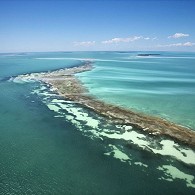Sydney
19 August 2009
 |
| Peter Garrett |
Peter Garrett says Australia's record of protecting its biodiversity has been poor. He proposes a more "holistic and strategic" approach to protecting vulnerable species.
The country is investigating more cost-effective ways to protect the environment as budgets have been hit hard by the global economic slowdown.
Saving entire ecosystems rather than focusing on individual species is part of the government's plan. This would include enhancing efforts to safeguard the Great Barrier Reef. It stretches for more than 2,000 kilometers along Australia's northeast coast and is home to a wonderful array of mollusks, fish, sea snakes and birds.
 |
| View of Australia's Great Barrier Reef |
Like most countries, Australia has to balance economic growth with protecting its environment. But Environment Minister Garrett says the country will pay a heavy price if does not protect valuable areas.
"There's not only, if you like, a spiritual aura or cultural cost we pay, but there's also an economic cost," Garrett said. "If you look at the value of the Great Barrier Reef, it's World Heritage listed, it's one of the most fantastic collections of coral and diversity of marine life. It also generates billions of dollars every year to our economy."
The government thinks the country's rich biodiversity underpins its quality of life, economy and national identity.
There are 1,770 threatened plants and animals in Australia and the continent's wealth of flora and fauna is diminishing quickly.
The list of critically endangered species includes the grey nurse shark, of which only about 500 survive off eastern Australia and the armoured mist frog, which has not been seen since the mid 1990s.
Scientists say that Australia's rate of extinction could rise with climate change as warmer temperatures may increase the incidence of severe droughts, floods and storms.